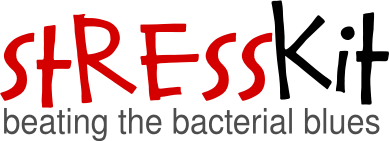Team:IIT Madras/Project
From 2008.igem.org
| Home | About Us | Project Details | Notebook |
|---|
Contents |
Overall project
Background
Our project looks at a specific category of bacterial transcription factors. Sigma factors are prokaryotic transcription initiation factors that enable the specific binding of RNA polymerase to a variety of promoters. Escherichia coli sigma factors function to differentially express various sets of genes under different environmental conditions. Based on the feasibility of different promoters and their architectures, we've selected the following as ideal candidates for our project:
- sigma70 (rpoD):housekeeping genes during exponential growth
- sigma38/S (rpoS):master regulator for a generalized stress response
- sigma32/H (rpoH):unfolded protein response
- sigma28/F (rpoF):flagellar biosynthesis
- sigma24/E (rpoE):response to unfolded proteins in the cell envelope
Objectives
Our goal is to assemble a library of sigma-dependent and lac contorlled promoters, and submit these to the Registry of Standard Biological Parts. This "StressKit" can be used to control gene expression specifically during each phase of the bacterial growth curve and will also give users the ability to regulate gene expression using temperature, pH and other stress inducers as external cues. This modular approach, identifying and standardizing a set of functional parts so they may be used in diverse future applications, is one of the central themes of synthetic biology.
Methodology
Candidate promoters have been identified from literature searches and bioinformatics. We've chosen 4 special sigma factors listed above in addition to the houskeeping sigma 70 to include in our library. Our design is an attempt to engineer the regulation achievable with a lac promoter fused with the differential expression of the sigma factor dependent promoters. The custom promoters have recognition elements of the 2 classes of promoters pasted between each other in the least intrusive fashion. These promoters are also designed to conform to the Registry's BioBrick format (involving the removal of various restriction sites, and insertion into a standard plasmid backbone). We will then introduce these promoters into fluorescent expression systems and test their activity under various environmental stresses using fluorescence microscopy and spectroscopic techniques.
 "
"
